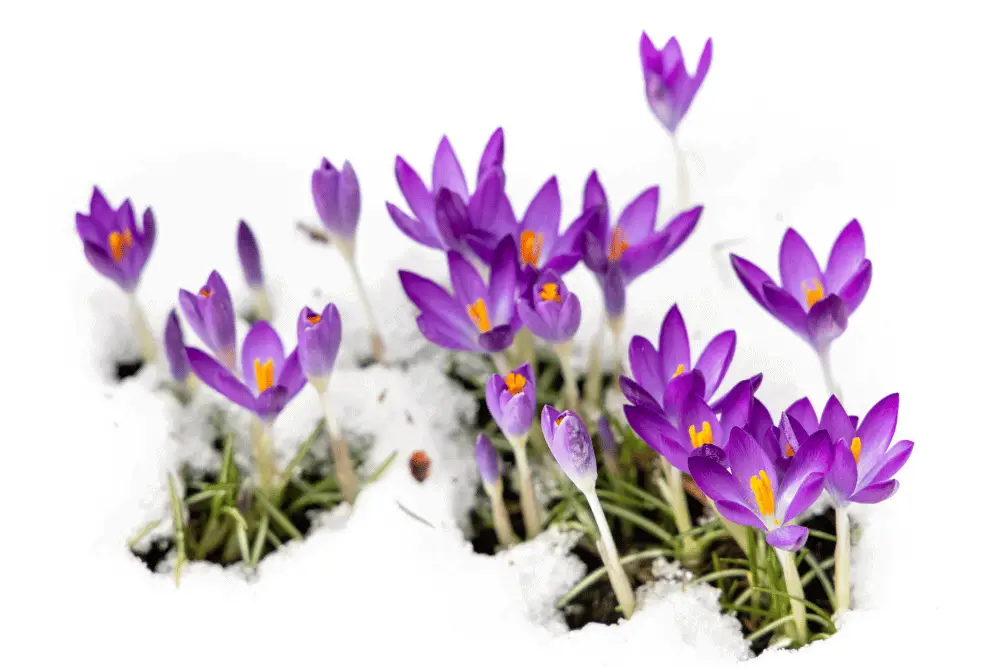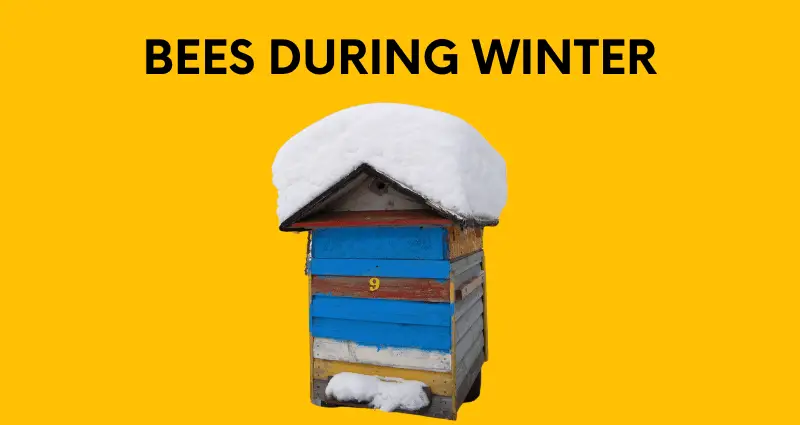Honeybees remain in their hives in their home territory during the winter. They do not truly hibernate, but engage in activities to keep the queen warm in the hive. Other species of bees have slightly different approaches to making it through the winter.
Winter makes us all want to hunker down and stay indoors, but did you know it can be an equally hazardous time for our buzzing friends, the bees? In today’s blog post, we’re shedding light on the fascinating phenomenon of where bees go and what they do during winter.
What Do Bees Do In Winter
Bees are very purposeful creatures. Their priority in the winter is to keep the queen warm.
Honeybees huddle around the queen into a tight “bee ball,” exercising their wing muscles so much that their bodies shiver. This continuous action keeps the inside of the hive warm and acts like a living thermostat to keep the temperature around the queen between 90-100° F.
The worker bees in the middle will move outwards towards the edges of the ball as they get warmer and then back inwards as they cool down. This motion circulates air in and out of the ball so that all bees receive oxygen.
Producing heat and staying alive requires a good supply of stored honey. A typical honey bee colony consumes as much as 30 pounds of honey during the winter. Considering that a single worker bee produces only one-twelfth of a teaspoon of honey during her lifespan, many bees must work together starting in late summer to build food stores to make it through the winter.
When more food is needed within the hive, honey bees may search for food during wintertime in warmer climates. During these brief periods, they will fly out searching for pollen and nectar from nearby flowers. Conscientious beekeepers plant flowers that bloom at different times so bees can drop by. Many will also provide sources of sugary syrup or sugar bricks for their hive in the winter.
Most bees who venture out of the hive in the winter may expel waste on “cleansing flights.” Other bees out and about will likely be male bees or drones expelled from the hive. Drones live to mate with the queen, but during the winter, the queen does not venture out on mating flights.
Do Bees Hibernate?
Bees do not truly hibernate, as their metabolism never entirely shuts down like a hibernating mammal. This is mainly because bees are cold-blooded, and they lack the metabolic mechanisms that allow warm-blooded animals to lower their body temperature to survive cold winter temperatures. However, bees do have strategies to overwinter and survive the season.
During the winter, the queen continues to lay eggs that will develop into young bees that replace older bees that die. If the colony’s honey and pollen supplies are good, worker bees will start to feed the new brood during the winter. If supplies are low, they will delay nurturing the young until spring. Bees born in the fall and winter become the core population of the hive in the spring.
By clustering, bees can keep temperatures within their hives from dipping too low—even on cold winter days when outdoor temperatures drop as low as -20°C (-4°F). Bees will also employ strategies such as feeding on stored honeycomb or drinking more sugary solutions to help them metabolize food more efficiently in colder conditions. This puts them into “quasi-hibernation” mode until it gets warmer again outside.
Do All Bees Approach Winter The Same Way?
Whether it’s through forming a bee ball, searching for food on warmer days, or going into hibernation, different species of bees have adapted various strategies for surviving cold temperatures during wintertime and continuing their lifecycle until spring.
Bumblebees
Some bee species, such as bumblebees, do not form tight winter clusters when trying to stay warm as honey bees do. Instead, each bee looks for a place to hibernate when temperatures drop too low.
Most of the bees die, except for new queens who mated in the fall with male bumblebees. These future bumblebee queens, plumped up with honey to survive the winter, live underground or in holes in soft, dry wood that are safe and dry. When spring comes, they venture out to form new colonies.
Solitary Bees Or Stingless Bees
Other species, such as solitary or stingless bees, can remain active most of the winter. However, cold weather will still limit their activity compared to warmer months. They lay eggs either above or below ground.
Some, like mining bees, sweat bees, and polyester bees, lay eggs in protected areas above ground, while leafcutter bees and mason bees lay eggs underground. The eggs hatch, but the dormant adults or developing pupae remain in the nest until the weather gets warmer. The females who emerge find their own nesting sites and begin laying eggs.
How To Help Bees During Winter Months
The question of where bees go in winter is a natural concern. Bees play an essential role in the environment and our food supply, so it’s important to protect them even during the colder months of the year.

To help our fair-weather friends survive throughout the wintry season, beekeepers should remember these tips:
- When supplementing colonies with newly purchased bees, source native bees from the same climate that can make it through area winters.
- Supplement honey with sugar syrup and fondant blocks or pollen patties to ensure the hive has enough food to survive.
- Avoid removing bee nests or disturbing their natural habitat so they won’t be exposed when it’s cold outside.
- Place blankets over vulnerable bee hives, which will help provide extra insulation. However, wrapping poses a risk of locking in moisture in some climates. As the bees release carbon dioxide, condensation can form that will drip on the bees. The bees drink up some of the moisture, but beekeepers should provide a way for excess moisture to escape.
- When it snows too heavily, visit your backyard bee hives a few times a week, and brush off any snow pileups on top of them.
- Plant flower gardens with different types of flowers that open at various times throughout the seasons. This will be helpful for late bloomers who need nectar sources late in fall or early spring.
- Have easily accessible bird feeders with nutritious seeds to discourage birds from eating bees.
- Ensure bees have unpolluted water sources nearby, such as thawed ponds and rain gutters. Bees need water to drink and also to clean themselves (especially after heavy rains).
By taking these simple steps, we can ensure our buzzing friends always have enough food and resources available, even during tough weather conditions.

